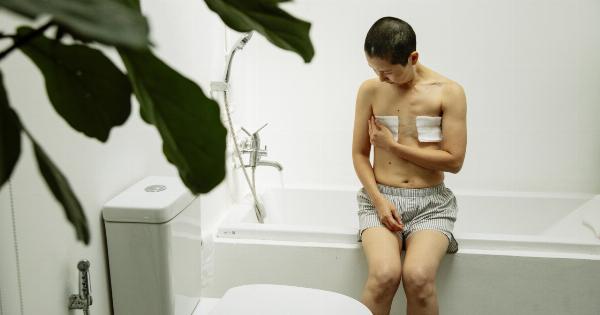Dense breasts refer to the appearance of breast tissue on a mammogram. It is a term used to describe the composition of the breasts and how it appears on a mammogram image.
Breasts are primarily composed of milk ducts, glands, fatty tissue, and supportive connective tissue. Dense breasts have less fatty tissue and more glandular and fibrous tissue, which can make them appear white on a mammogram.
The Link Between Breast Density and Cancer Risk
Research has shown that women with dense breasts have a slightly higher risk of developing breast cancer compared to women with less dense breasts.
However, it is important to note that having dense breasts does not mean you will definitely develop breast cancer. Breast density is just one of the many factors that contribute to breast cancer risk.
The Challenges of Mammography in Dense Breasts
Mammography is the most common screening tool used to detect breast cancer. However, it can be more challenging to detect abnormalities in dense breast tissue.
On a mammogram, both tumors and dense breast tissue appear white, making it difficult for radiologists to distinguish between the two. As a result, breast cancers may be missed, especially in women with extremely dense breasts.
Additional Screening Options
For women with dense breasts, additional screening methods may be recommended in addition to mammography. These methods can help improve the chances of detecting breast cancer in its early stages. Some of the additional screening options include:.
1. Ultrasound
Ultrasound uses sound waves to create images of the breast tissue. It can be helpful in identifying whether a mass is a solid tumor or a fluid-filled cyst.
Ultrasound is especially useful for women with dense breasts, as it provides a clearer picture of the breast tissue.
2. MRI (Magnetic Resonance Imaging)
MRI uses powerful magnets and radio waves to produce high-resolution images of the breast. It is typically recommended for women at high risk of developing breast cancer, including those with dense breasts.
MRI can detect smaller abnormalities that may not be visible on a mammogram.
3. Molecular Breast Imaging (MBI)
MBI is a relatively new screening tool that uses a radioactive tracer to detect breast cancer. It is particularly useful for women with dense breasts, as it can identify areas of increased metabolic activity that may indicate the presence of cancer.
Supplementing Mammography with Other Techniques
While mammography is still considered the gold standard for breast cancer screening, it is important for women with dense breasts to be aware of the limitations and discuss additional screening options with their healthcare providers.
Supplementing mammography with ultrasound, MRI, or MBI can increase the chances of detecting breast cancer in its early stages, when treatment is often more successful.
Know Your Breast Density
It is crucial for women to know their breast density to make informed decisions about their breast health. Breast density is typically determined by a radiologist who evaluates your mammogram.
The American College of Radiology has established four categories to classify breast density:.
1. Category A: Mostly fatty
In this category, the breast tissue is primarily composed of fat, making it easier to detect abnormalities on a mammogram.
2. Category B: Scattered fibroglandular densities
In this category, there is a mix of fatty tissue and glandular tissue, which may slightly increase the chances of breast cancer.
3. Category C: Heterogeneously dense
Here, the breast tissue has more glandular and fibrous tissue, making it difficult to detect abnormalities. Women with heterogeneously dense breasts may have a slightly higher risk of developing breast cancer.
4. Category D: Extremely dense
In this category, the breast tissue is extremely dense, with very little fatty tissue. Women with extremely dense breasts have a higher risk of developing breast cancer and may require additional screening methods.
Stay Proactive About Your Breast Health
Regardless of your breast density, it is important to stay proactive about your breast health. Here are some important steps every woman can take:.
1. Regular Breast Self-Exams
Perform monthly breast self-exams to become familiar with your breast tissue and note any changes, such as new lumps or skin abnormalities.
2. Clinical Breast Exams
Have regular clinical breast exams performed by a healthcare professional. They can detect any abnormalities or changes in your breast tissue that may require further investigation.
3. Regular Mammograms
Follow the recommended guidelines for mammograms based on your age and risk factors. Mammograms can help detect breast cancer early, even in women with dense breasts.
4. Discuss Dense Breasts with Your Doctor
Talk to your doctor about your breast density and any concerns you may have. They can provide guidance on additional screening methods that may be appropriate for you.
Conclusion
Understanding the relationship between breast density and mammography is crucial for every woman.
Women with dense breasts face unique challenges in breast cancer screening, but there are additional screening options available to improve early detection. Knowing your breast density and staying proactive about your breast health can help ensure early detection and potentially save lives.



















